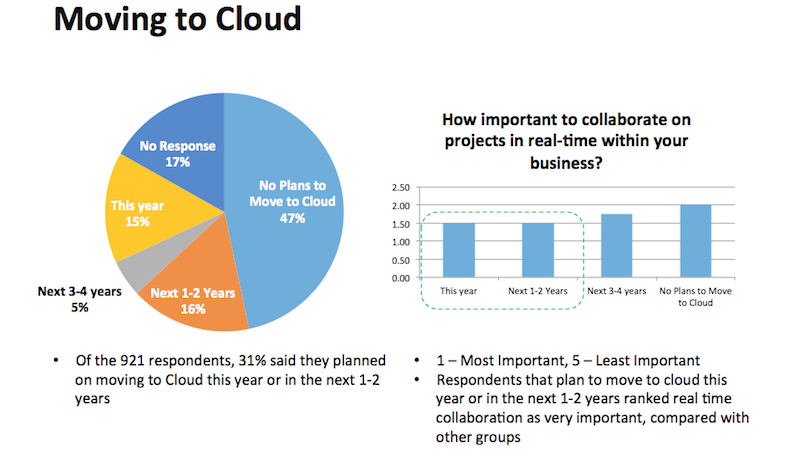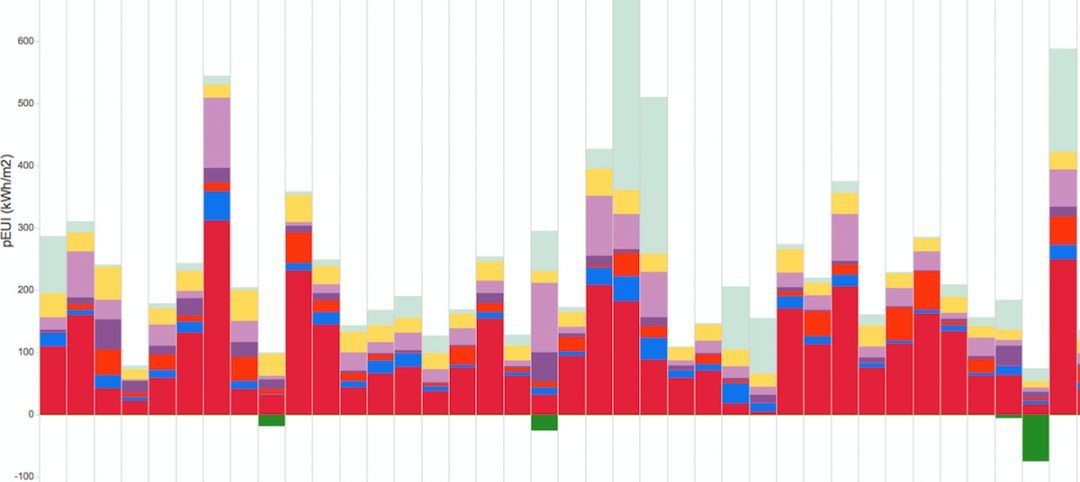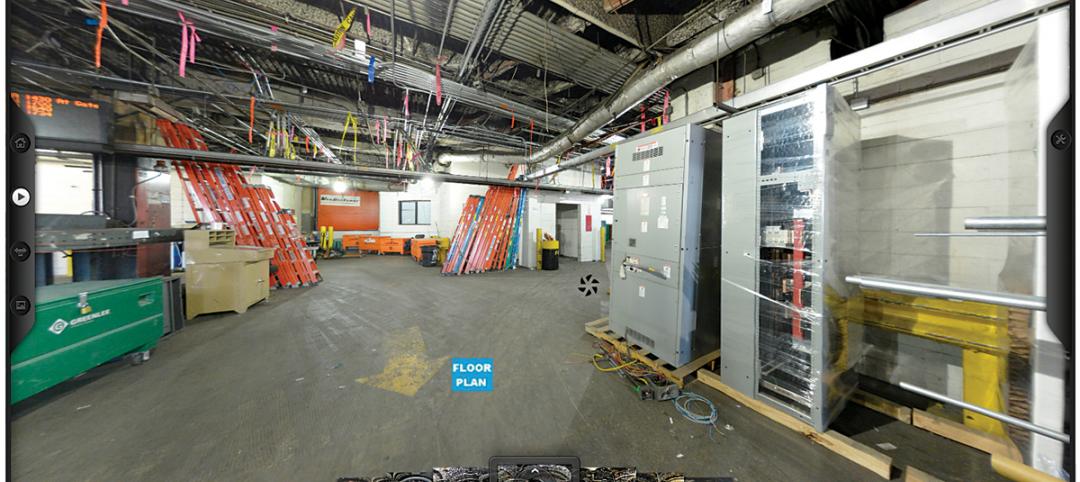The majority of construction companies currently aren't using cloud software, and fewer than two-fifths plan to move their takeoff, estimating, or project management functions onto the cloud within the next four years, according to a survey of estimators, executives, and project managers conducted by Houston-based On Center Software, which provides technology solutions to construction professionals.
Among the survey’s 921 respondents, 42% were estimators, 22% managers or chief estimators, 22% project managers, and 13% executives.
Being able to communicate using a single source of data is the most important factor to all respondents when they are evaluating different software providers. More than 60% of each respondent group indicates that being able to integrate their systems—particularly estimating, takeoffs, and project management—is a requirement when evaluating providers.
The respondents are also looking for solutions that minimize costly errors and rework.

Yet, about 70% of those polled say their companies aren’t using cloud software today. However, 15% plan to move their processes to the cloud this year, 16% within the next two years, and 5% within the next four years.
Nearly half of the respondents—47%—aren’t planning to move their processes to the cloud within this time period.
Angelo Castelli, On Center Software’s Chief Operating Officer, points out the irony of this resistance, in that a significant portion of the industry “doesn’t realize” yet that the kind of broad collaboration companies are seeking, which would allow them to communicate about projects in real time using a single data source, can only be provided by the cloud.
The survey’s findings, though, do seem to reflect the construction’s industry’s basic conservatism when it comes to technology. Laptops still dominate as the preferred mobile device among the respondent groups. Less than half of the respondents are currently using smartphones. Android is the most widely used smartphone among respondents whose companies plan to move to the cloud within the next two years.
Related Stories
Green | Jun 8, 2015
Diamond Schmitt Architects creates tool to compare energy use data across building types
The firm's new ecoMetrics tool allows for a comprehensive analysis of data from energy simulation models across a wide range of the company’s building types.
BIM and Information Technology | Jun 5, 2015
Backpack becomes industry first in wearable reality capture
Combining five high-dynamic cameras and a LiDAR profiler, Leica's Pegasus:Backpack creates a 3D view indoors or outdoors for engineering or professional documentation creation.
BIM and Information Technology | Jun 4, 2015
Why reality capture is essential for retrofits
Although we rely upon as-built drawings to help us understand the site for our design, their support is as thin as the paper they are printed on, write CASE's Matthew Nelson and Carrie Schulz.
BIM and Information Technology | Jun 3, 2015
More accurate GPS ready to change the way we shop, interact, and explore
New technology reduces location errors from the size of a car to the size of a nickel—a 100 times increase in accuracy. This is a major technological breakthrough that will affect how we interact with environments, the places we shop, and entertainment venues.
Sponsored | BIM and Information Technology | May 28, 2015
Does BIM Work as a Deliverable?
Sasha Reed sits down with industry professionals at the BIMForum in San Diego to talk about BIM technology.
BIM and Information Technology | May 27, 2015
4 projects honored with AIA TAP Innovation Awards for excellence in BIM and project delivery
Morphosis Architects' Emerson College building in Los Angeles and the University of Delaware’s ISE Lab are among the projects honored by AIA for their use of BIM/VDC tools.
BIM and Information Technology | May 26, 2015
Lego-like model building kit was created by an architect for architects
Arckit, as the system is called, was designed to a 1:48 scale, making it easy to create models accurate to the real-life, physical building projected.
BIM and Information Technology | May 26, 2015
Moore's Law and the future of urban design
SmithGroupJJR's Stephen Conschafter, urban designer and planner, discusses his thoughts on the 50th anniversary of Moore's Law and how technology is transforming urban design.
BIM and Information Technology | May 21, 2015
How AEC firms should approach BIM training
CASE Founding Partner Steve Sanderson talks about the current state of software training in the AEC industry and common pitfalls in AEC training.
BIM and Information Technology | May 13, 2015
5 smart tech trends transforming the job site
RFID labor tracking, 360 cameras, and advanced video tools are among the tech innovations that show promise for the commercial construction industry.

















